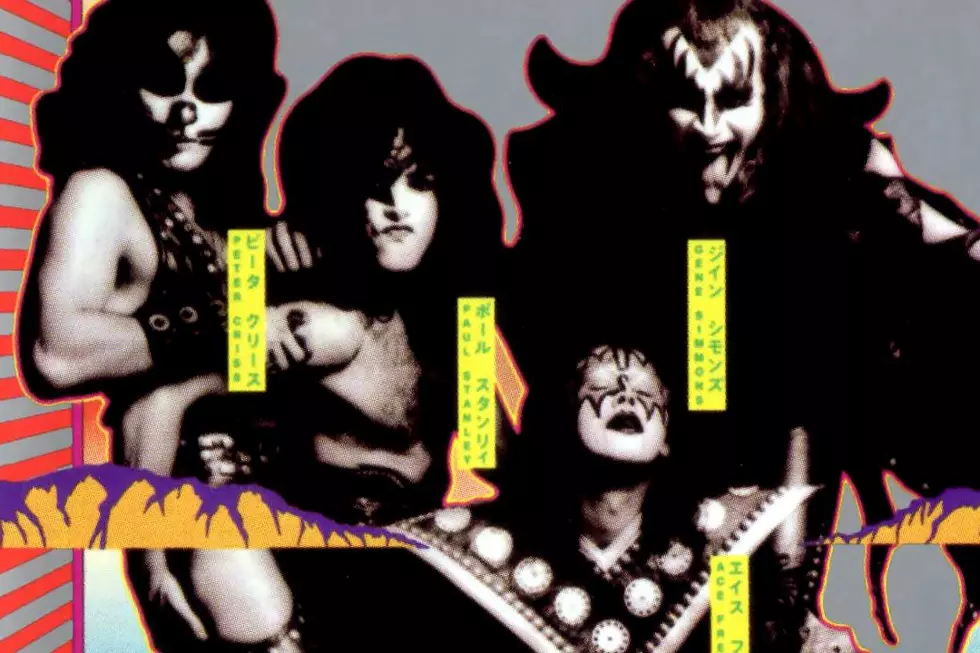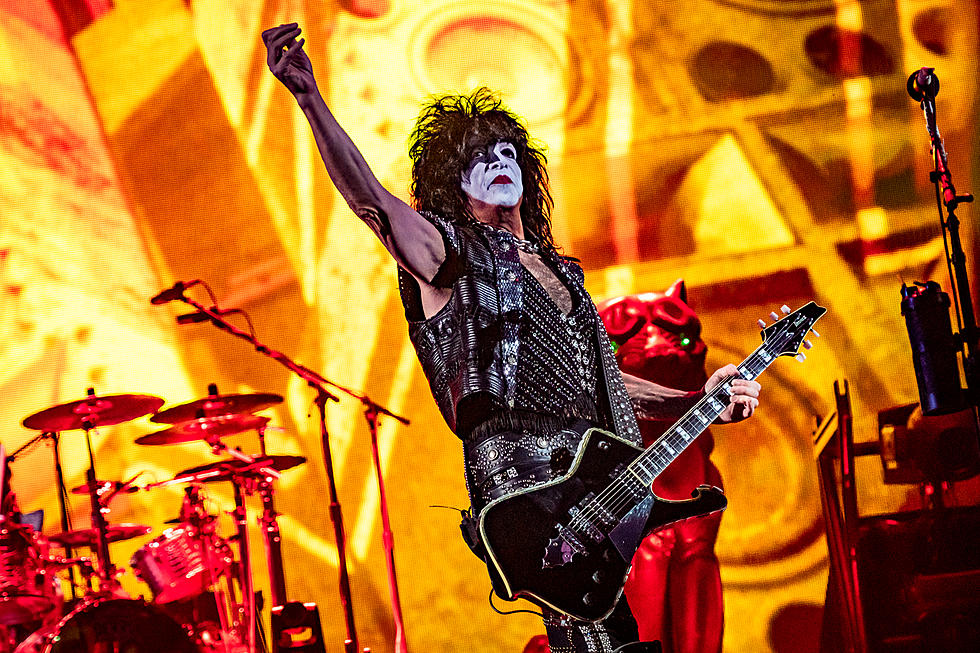
How Kiss Just Missed a Breakthrough With ‘Hotter Than Hell’
Halloween came early for Kiss with the Oct. 22, 1974 release of Hotter Than Hell, the sophomore album from New York’s outrageously costumed and face-painted hard rockers.
Still a relatively unknown proposition at the time, Kiss had unveiled their eponymous debut only six months earlier – but its modest sales in no way suggested the decades of successes that lay ahead.
Instead, Kiss members Paul Stanley, Gene Simmons, Ace Frehley and Peter Criss had yet to convince either consumers and the rock and roll establishment in general that their striking image and powerful heavy rock sound was more than a passing novelty.
Hotter than Hell would be their vehicle. Or would it?
Right from the start, the album’s recording was marked by difficulties — most of them centering on the band’s relocation to Los Angeles, where the production team of Kenny Kerner and Richie Wise (also responsible for Kiss’ first album) was then based. It would seem the duo were still coming to grips with the equipment at Village Recorders, if the famously lacking production on Hotter than Hell was any indication.
"We hoped to remedy the sonic deficiencies we found in the first album," Stanley explained in Kiss: Behind the Mask. "We were never as rock-'n'-rolly or good-timey as we sounded on that album. We were much heavier live. So, [for the subsequent Hotter Than Hell] we tried to capture sonically how we sounded live. Unfortunately, the people that we were working with might not have been the right people to be doing it with."
To make matters worse, Stanley’s guitar was stolen on their first day in town and Casablanca, Kiss’ record label, was too busy trying to stay in business to offer much hand-holding. Still, even all of those problems couldn't deter the group from recording numerous bona fide future Kiss classics like "Got to Choose," "Let Me Go, Rock ’n’ Roll" and the title cut – the latter of which went on to enjoy years of fan acclaim in concert.
Other Hotter Than Hell notables included Simmons’ lecherous love song "Goin’ Blind," as well as "Watchin’ You" and the Criss-sung "Mainline." There were no less than three songwriting contributions from Ace ("Parasite," "Strange Ways" and, with Stanley, "Comin’ Home"), though Kiss’ lead guitarist still lacked the confidence to sing on any of them just yet.
"I wasn't ready for it at the time," Frehley later explained to Ultimate Classic Rock. "I was insecure about my singing voice. When I recorded my first lead vocal [on 1977's "Shock Me"], I recorded it singing on my back, with the lights down in the studio."
Meanwhile, the album art for Hotter Than Hell would become among the most iconic of Kiss’ career – no mean feat in such a large and visually arresting catalog. The front boasted a comic book-style design inspired by Japanese manga, while the provocative rear sleeve glamour shots were taken by noted photographer Norman Seeff.
As Kiss headed back out on the concert trail, however, Casablanca was all but paralyzed after cutting ties with distributor Warner Bros., and thus hard-pressed to offer the band significant marketing support. There was a token radio promotion campaign and a television ad. But at this point, even shipping albums to record stores was a major challenge.
Not surprisingly, this unfortunate state of business affairs was largely to blame for the new LP’s paltry sales throughout the winter of 1974-75. That led to a decision to cut short the Hotter than Hell tour so that Kiss could quickly cut the follow-up Dressed to Kill – a project which would be properly distributed by Casablanca’s new partners, Polygram. Still, a well-deserved commercial breakthrough would have to wait until the release of Kiss' double-album concert triumph Alive! in 1975, when a broader marketplace finally got to hear many of the songs discussed here.
See Where Kiss Ranks Among Classic Rock’s Top Acts
Kiss Released One of Rock’s Most Hated Albums
More From Ultimate Classic Rock









